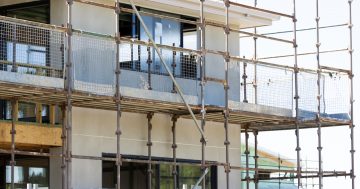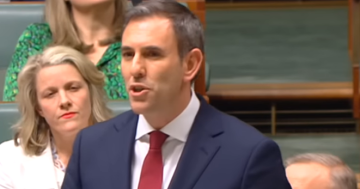
Infrastructure Australia CEO Romilly Madew. Photo: Infrastructure Australia.
Infrastructure Australia has published its first Infrastructure Market Capacity report, forecasting a surge in demand for skills, labour and materials due to the rapid increase in public infrastructure investment.
The report focuses on 634 major public infrastructure projects across transport, utilities and building, and includes 430 projects worth $218 billion to be completed by 2025.
Most of the investment will be in the transport sector – primarily in road and rail – with transport consuming 80 per cent of all resources, according to Infrastructure Australia.
Responding to a request from the Council of Australian Governments, Infrastructure Australia will regularly report on the capacity of the market to deliver on the record investment pipeline.
This first report underscores the need for Australia’s governments and industry to work collaboratively, to advance sector-wide reform, and reduce the risk of cost escalation and delays in the delivery of major infrastructure projects.
My Public Sector
“The Infrastructure Market Capacity report is an Australian-first and a new data capability for Infrastructure Australia,” says Infrastructure Australia CEO Romilly Madew. “It provides a level of visibility of the major project pipeline and resulting demand for skills, labour and materials that governments have not had until now.
“Major public infrastructure activity will approximately double during the next three years, peaking at $52 billion in 2023. This record investment creates new opportunities for local business and employment, however it also risks constraints in the capacity of the market to meet this growth in investment.
“In mid-2023, employment in the infrastructure sector will need to grow from 183,000 people today to more than 288,000 with the potential shortfall in jobs being filled forecast to exceed 105,000, with one in three jobs advertised going unfilled. This presents an opportunity for further employment, but there is also a risk these roles will be unfilled.”
Among the key findings, the report forecast an average annual growth rate of 33 per cent as industry reports reduced confidence in their capacity to deliver on time and on budget.
Industry indicates high confidence of delivering 10-15 per cent annual growth, but low confidence in delivering growth above 18 per cent, while demand for plant, labour, equipment and materials will be two-thirds higher than the previous five years.
During the next three years, it is expected there will be 120 per cent average growth in demand for materials, 125 per cent growth in demand for equipment, and 140 per cent growth in demand for plant.
The peak of demand for skills is forecast to be 48 per cent higher than supply. Meeting this demand would require annual growth of 25 per cent during the next two years, which is more than eight times higher than the projected annual growth rate of 3.3 per cent.
Thirty four of the 50 public infrastructure occupations identified are potentially in shortage.
“This research further underscores the need for a coordinated project pipeline to manage capacity constraints and provide confidence and certainty for both industry and government,” said Ms Madew. “While infrastructure investment is rightfully a key component of our national COVID-19 recovery, we need to ensure we are equipped to deliver this once-in-a-generation infrastructure spend.
“The challenge of driving a step-change in infrastructure productivity and innovation is a shared one. It cannot be solved by governments or industry alone.”
Infrastructure Australia’s role is to work collaboratively alongside government, industry and the community to provide advice on the reforms and investment needed in the infrastructure sector.
A second phase of the Market Capacity Program is now under development for publication in the first half of 2022.





















